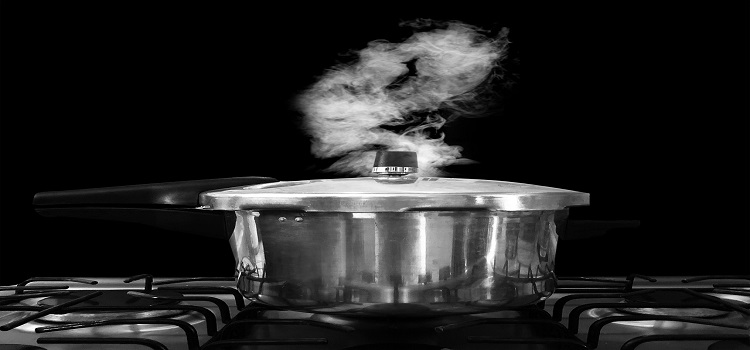As an Amazon Associate I earn from qualifying purchases.
Introduction:
Welcome to the vibrant world of pressure cooking, where the simplicity of cooking meets the bold flavors of fresh ingredients. In this guide, we’ll embark on a culinary adventure focused on the versatile and nutritious beetroot. From its vibrant hue to its earthy flavor, beetroot has captivated the palates of food enthusiasts for generations. Join us as we explore the benefits, step-by-step instructions, and expert tips for cooking beetroot in a pressure cooker like a seasoned chef.

Benefits of Pressure Cooking Beetroot:
Unlock the potential of pressure cooking with these benefits of cooking beetroot:
- Enhanced flavor: Pressure cooking intensifies the natural sweetness and earthy undertones of beetroot, resulting in a more flavorful and satisfying taste.
- Retained nutrients: The sealed environment of the pressure cooker preserves the essential vitamins, minerals, and antioxidants found in beetroot, ensuring maximum nutritional benefits with every bite.
- Time efficiency: Say goodbye to lengthy cooking times. Pressure cooking beetroot allows you to enjoy tender and succulent results in a fraction of the time compared to traditional cooking methods.
- Versatility: From vibrant salads to hearty soups to savory side dishes, pressure-cooked beetroot can be incorporated into a myriad of culinary creations, offering endless possibilities for experimentation in the kitchen.
Selection and Preparation:
Before diving into the pressure cooking process, it’s essential to select and prepare the perfect beetroot:
- Selection: Choose beetroot that is firm, smooth-skinned, and free of blemishes or soft spots. Opt for smaller-sized beetroots, as they tend to be sweeter and more tender.
- Washing and trimming: Rinse the beetroot under cold running water to remove any dirt or debris. Trim off the tops and roots, leaving approximately 1 inch of stem intact to prevent bleeding during cooking.
- Size uniformity: For even cooking, aim to select beetroot of similar sizes to ensure consistent results.
Pressure Cooking Techniques:
Master the art of pressure cooking beetroot with these expert techniques:
- Steaming method: Place a steamer basket or trivet in the pressure cooker and add water to just below the level of the basket. Arrange the prepared beetroot on the basket or trivet, ensuring they are not submerged in water. Cook according to your pressure cooker’s instructions until tender.
- Immersion method: Submerge the prepared beetroot directly in the cooking liquid (water or broth) in the pressure cooker. Ensure the liquid covers the beetroot entirely. Cook according to your pressure cooker’s instructions until tender.
- Flavor infusion: Elevate the flavor profile of your pressure-cooked beetroot by adding aromatics such as garlic, onions, or herbs to the cooking liquid. Experiment with different combinations to create unique flavor profiles.
Recipe Inspiration:
Explore creative ways to incorporate pressure-cooked beetroot into your culinary repertoire:
- Beetroot salad with goat cheese, walnuts, and balsamic vinaigrette
- Beetroot and feta tart with puff pastry
- Beetroot hummus served with warm pita bread
- Beetroot risotto with creamy goat cheese and fresh herbs
- Beetroot and apple soup garnished with crispy bacon bits
Storage and Serving Suggestions:
Maximize the longevity and versatility of pressure-cooked beetroot with these storage and serving tips:
- Refrigeration: Store cooked beetroot in an airtight container in the refrigerator for up to 5 days. Enjoy it cold as a refreshing addition to salads or sandwiches.
- Freezing: For longer-term storage, freeze cooked beetroot in freezer-safe bags or containers for up to 3 months. Thaw in the refrigerator before using in soups or stews.
FAQ:
- Q: Can I cook beetroot without peeling it? A: Yes, leaving the skin on helps retain the color and nutrients of the beetroot during cooking.
- Q: How long does it take to pressure cook beetroot? A: Cooking times vary depending on the size and freshness of the beetroot, but typically range from 10 to 15 minutes at high pressure.
- Q: Can I cook beetroot with other vegetables? A: Absolutely! Beetroot pairs well with other root vegetables like carrots, potatoes, and parsnips.
- Q: Can I use vegetable broth instead of water for cooking? A: Yes, vegetable broth adds extra flavor to the beetroot while cooking. Feel free to use it as a cooking liquid.
- Q: Can I freeze pressure-cooked beetroot? A: Yes, cooked beetroot can be frozen for future use. Allow it to cool completely before freezing in an airtight container.
- Q: Can I add vinegar or lemon juice to the cooking liquid? A: Adding a splash of vinegar or lemon juice to the cooking liquid can help preserve the vibrant color of the beetroot.
- Q: How do I store cooked beetroot? A: Cooked beetroot can be stored in the refrigerator for up to five days. Keep it in an airtight container to maintain freshness.
- Q: Can I cook beetroot in an electric pressure cooker? A: Yes, electric pressure cookers work just as well as stovetop models for cooking beetroot.
- Q: Can I reuse the cooking liquid from pressure-cooked beetroot? A: Yes, the cooking liquid can be strained and used as a base for soups or sauces.
- Q: Can I add salt to the cooking liquid? A: Yes, adding a pinch of salt to the cooking liquid can enhance the flavor of the beetroot.
Conclusion:
Incorporate the vibrant hues and earthy flavors of pressure-cooked beetroot into your culinary creations and elevate your dining experience to new heights. With its nutritional benefits, versatility, and ease of preparation, beetroot is a must-have ingredient in any kitchen arsenal. Armed with the knowledge and techniques shared in this guide, you’re well-equipped to embark on a flavorful journey of pressure cooking perfection with beetroot as your guide.
As an Amazon Associate I earn from qualifying purchases.
Leave a Reply